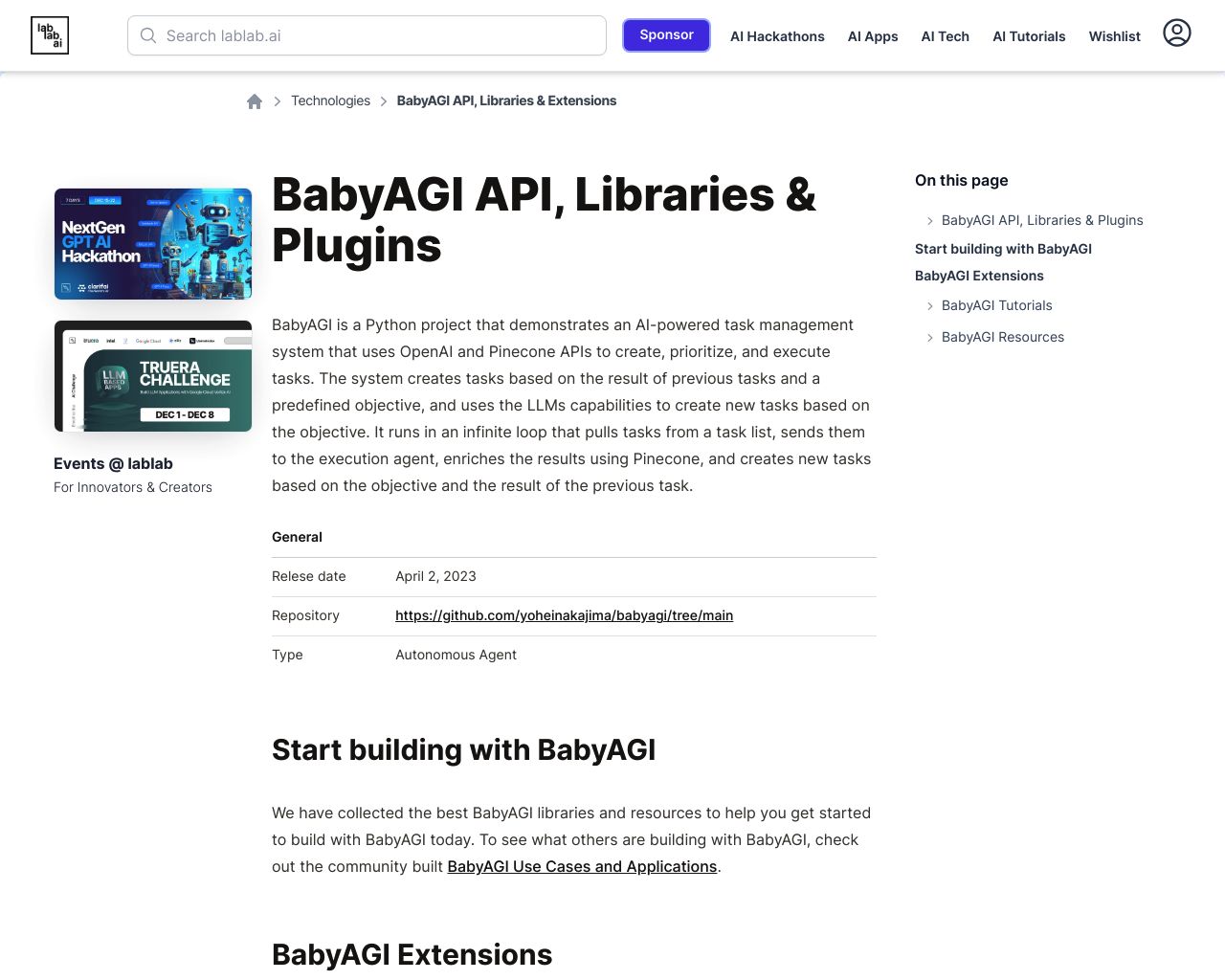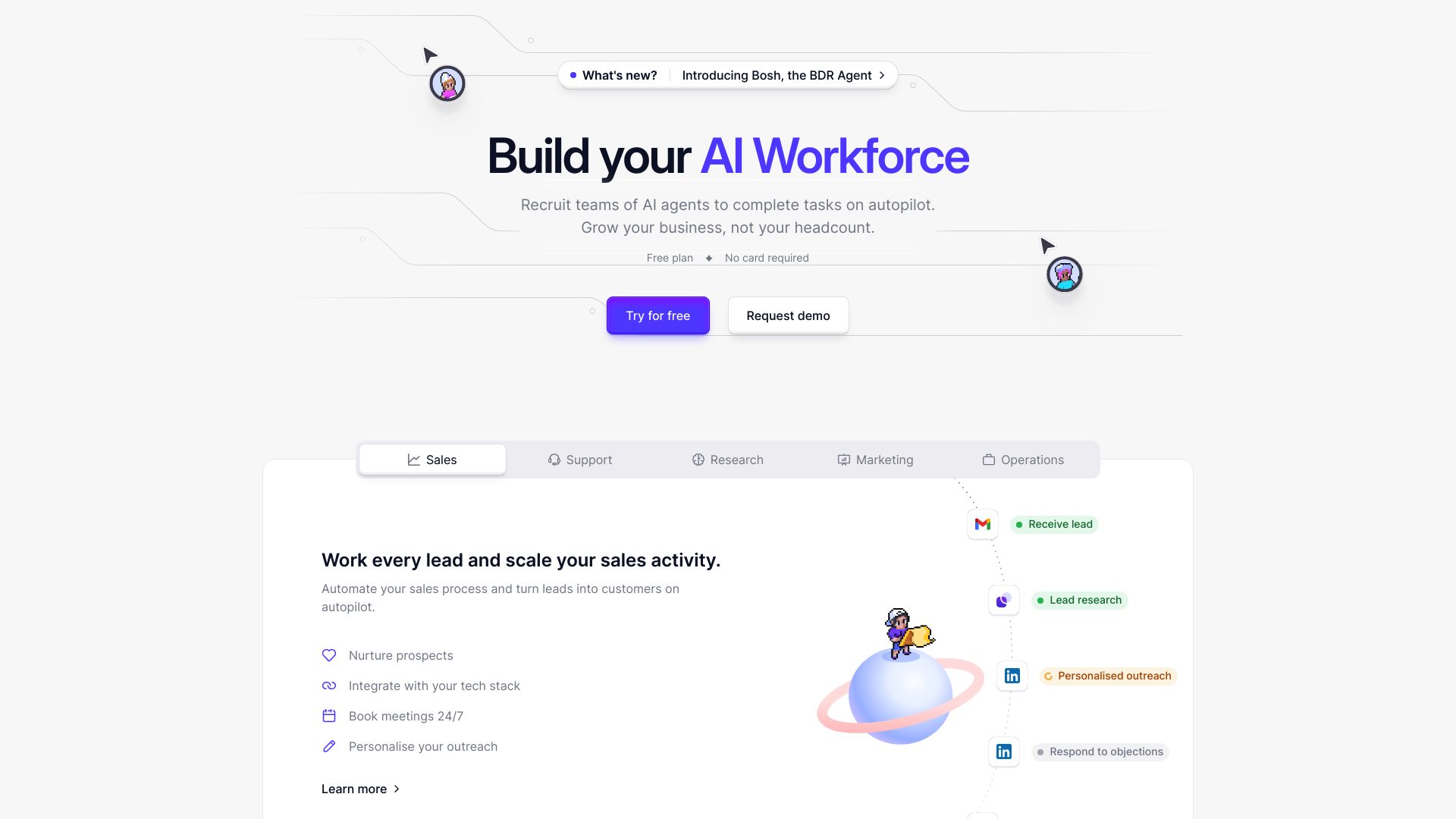BabyAGI vs. Relevance AI: Comparing AI Task Management Tools
AI-powered task management and agent development platforms are reshaping how businesses approach complex workflows and decision-making processes. BabyAGI vs. Relevance AI stand out as innovative solutions in this rapidly evolving field, each offering unique approaches to harnessing artificial intelligence. This comparison delves into the strengths and limitations of BabyAGI’s autonomous task management system and Relevance AI’s low-code platform for AI agent creation.
We’ll explore how these tools stack up against SmythOS, a comprehensive AI development environment that combines powerful features with user-friendly design. Whether you’re a developer seeking advanced AI capabilities, a business leader looking for scalable solutions, or a non-technical professional aiming to leverage AI without extensive coding, this analysis will help you navigate the landscape of AI-driven task management and agent development tools.
BabyAGI Overview
BabyAGI revolutionizes task management through artificial intelligence. This open-source project simulates human-like cognition, autonomously generating, prioritizing, and executing tasks based on predefined objectives.


Developed by Yohei Nakajima, BabyAGI leverages advanced natural language processing and machine learning to adapt and learn from previous tasks. Its core strength lies in breaking down complex objectives into manageable subtasks, executing them efficiently, and iterating based on results.
BabyAGI leverages advanced natural language processing and machine learning to adapt and learn from previous tasks. Its core strength lies in breaking down complex objectives into manageable subtasks…
BabyAGI integrates seamlessly with OpenAI’s language models and Pinecone’s vector database for storing and retrieving task outcomes. This combination enables the system to maintain context and learn from past experiences, enhancing its problem-solving capabilities over time.
While BabyAGI offers powerful autonomous task management, it lacks some features found in more comprehensive platforms. It doesn’t provide a visual builder or no-code editor, requiring users to have Python programming knowledge. Additionally, BabyAGI operates as a single agent, without built-in support for multi-agent collaboration or specific human-AI interaction mechanisms.
Despite these limitations, BabyAGI’s innovative approach to AI-driven task management positions it as a valuable tool for developers and researchers exploring the frontiers of artificial general intelligence. Its ability to handle complex, multi-step problems autonomously makes it particularly suited for applications in fields like data analysis, research, and process optimization.
Relevance AI Overview
Relevance AI offers a low-code platform for building and deploying AI agents powered by Large Language Models (LLMs). The platform enables users to integrate advanced AI capabilities into their workflows without extensive programming skills. Relevance AI’s core offering focuses on simplifying the creation of custom AI agents and tools, supporting multiple LLM providers, and providing advanced customization options.
The platform’s key features include a low-code environment for rapid AI agent development, multi-provider LLM support for flexibility, a built-in vector store for efficient data handling, and a fully managed deployment service called Magic Deployment. Relevance AI also provides a type-safe and flexible SDK for building applications with LLM features, ensuring both safety and adaptability in development.
Relevance AI caters to a diverse audience, from developers and technical teams to business leaders and non-technical professionals. The platform’s visual builder and pre-built templates make it accessible for users with varying levels of technical expertise. However, the absence of specific features like debug mode, multi-agent collaboration, and certain deployment options might limit its appeal to more advanced users or specific use cases.
Relevance AI offers a low-code platform for building and deploying AI agents powered by Large Language Models (LLMs). The platform enables users to integrate advanced AI capabilities into their workflows without extensive programming skills.


While Relevance AI excels in providing a user-friendly platform for AI agent creation, it lacks some advanced features found in other platforms. The absence of explainability tools, audit logs, and advanced security features like constrained alignment may be a concern for users in highly regulated industries or those requiring detailed insights into AI decision-making processes. Additionally, the platform’s focus on LLM-based agents might not fully address the needs of users looking for more diverse AI capabilities or extensive integration with external tools and APIs.
Relevance AI’s vision of democratizing access to advanced AI technologies aligns with the growing demand for accessible AI solutions. However, as the AI landscape evolves, the platform may need to expand its feature set to remain competitive, particularly in areas like multimodal capabilities, advanced debugging tools, and more comprehensive deployment options.
Feature Comparison
BabyAGI and Relevance AI offer distinct approaches to AI agent development, with notable differences in their core components and security features. BabyAGI excels in autonomous task management, leveraging advanced natural language processing to generate, prioritize, and execute tasks independently. Its integration with Pinecone for vector storage allows for efficient memory and context handling. However, BabyAGI lacks a visual builder or no-code editor, requiring users to have Python programming knowledge.
Relevance AI, in contrast, provides a low-code environment with a visual builder, making AI agent creation more accessible to users with varying technical backgrounds. It supports multiple LLM providers and offers a built-in vector store, enhancing flexibility in AI model selection and data handling. While Relevance AI shines in user-friendly development, it doesn’t match BabyAGI’s depth in autonomous task generation and execution.
Neither platform offers robust multi-agent collaboration or advanced debugging tools. BabyAGI’s focus on task-driven autonomy contrasts with Relevance AI’s emphasis on rapid development and deployment. In terms of security, both platforms have limitations, with neither offering comprehensive features like constrained alignment or detailed audit logs, which may be crucial for enterprise-level applications.
Feature Comparison Table
| BabyAGI | Relevance AI | SmythOS | |
|---|---|---|---|
| CORE FEATURES | |||
| Hosted Agents (Dev, Production) | ❌ | ✅ | ✅ |
| Environments (Dev, Production) | ❌ | ✅ | ✅ |
| Visual Builder | ❌ | ✅ | ✅ |
| No-Code Options | ❌ | ✅ | ✅ |
| Explainability & Transparency | ❌ | ❌ | ✅ |
| Multi-Agent Collaboration | ✅ | ❌ | ✅ |
| Human-AI Interaction | ❌ | ✅ | ✅ |
| Audit Logs for Analytics | ❌ | ❌ | ✅ |
| Work as Team | ✅ | ❌ | ✅ |
| Agent Work Scheduler | ❌ | ✅ | ✅ |
| Logs & Monitoring | ❌ | ✅ | ✅ |
| SECURITY | |||
| Constrained Alignment | ❌ | ❌ | ✅ |
| IP Control | ❌ | ❌ | ✅ |
| COMPONENTS | |||
| Foundation AIs | ❌ | ✅ | ✅ |
| Huggingface AIs | ✅ | ❌ | ✅ |
| Zapier APIs | ✅ | ❌ | ✅ |
| Data Lakes | ❌ | ❌ | ✅ |
| DEPLOYMENT OPTIONS (EMBODIMENTS) | |||
| Staging Domains | ❌ | ✅ | ✅ |
| Production Domains | ❌ | ✅ | ✅ |
| Deploy as Scheduled Agent | ❌ | ✅ | ✅ |
| DATA LAKE SUPPORT | |||
| Sitemap Crawler | ❌ | ❌ | ✅ |
| YouTube Transcript Crawler | ❌ | ✅ | ✅ |
| URL Crawler | ✅ | ❌ | ✅ |
Best Alternative to BabyAGI and Relevance AI
SmythOS emerges as the superior alternative to BabyAGI and Relevance AI, offering a comprehensive platform for AI agent development and deployment. Our solution combines the best aspects of both competitors while addressing their limitations.
We provide a powerful visual builder and no-code options, making AI agent creation accessible to users of all skill levels. Unlike BabyAGI, which requires Python programming knowledge, or Relevance AI’s limited customization options, SmythOS offers intuitive tools for building complex AI workflows without sacrificing flexibility.
SmythOS offers intuitive tools for building complex AI workflows without sacrificing flexibility.
Our platform excels in multi-agent collaboration, a feature lacking in Relevance AI and only partially implemented in BabyAGI. SmythOS enables teams of AI agents to work together seamlessly, tackling complex tasks with greater efficiency. This capability, combined with our advanced debugging tools and explainability features, ensures transparency and control throughout the development process.
SmythOS sets itself apart with its extensive integration ecosystem. We support a wide range of AI models, APIs, and data sources, including Hugging Face models, Zapier integrations, and data lakes. This versatility allows users to leverage existing tools and data, creating more powerful and context-aware AI agents. Additionally, our platform offers multiple deployment options, from APIs and webhooks to scheduled agents and chatbots, providing unmatched flexibility in how AI solutions are implemented.
SmythOS sets itself apart with its extensive integration ecosystem… creating more powerful and context-aware AI agents.
With SmythOS, users benefit from enterprise-grade security features, scalability, and comprehensive logging and monitoring tools. These capabilities ensure that AI agents can be deployed safely and efficiently in production environments, addressing the limitations of both BabyAGI and Relevance AI in terms of enterprise readiness. By choosing SmythOS, users gain access to a future-proof platform that combines ease of use with advanced functionality, making it the ideal choice for businesses and developers looking to harness the full potential of AI agents.
Conclusion
BabyAGI and Relevance AI offer unique approaches to AI-driven task management and agent development. BabyAGI excels in autonomous task generation and execution, leveraging advanced NLP to simulate human-like cognition. Its integration with vector databases for context handling sets it apart. However, BabyAGI’s lack of a visual interface and requirement for Python knowledge limits its accessibility.
Relevance AI shines with its low-code platform and user-friendly visual builder, making AI agent creation accessible to a broader audience. It supports multiple LLM providers and offers a built-in vector store, providing flexibility in AI model selection and data handling. Yet, Relevance AI falls short in autonomous task generation and execution depth compared to BabyAGI.
While both platforms have their strengths, SmythOS emerges as the superior choice, offering a comprehensive solution that combines the best of both worlds. SmythOS provides a powerful drag-and-drop interface for creating complex AI workflows without extensive coding knowledge. It supports multi-agent collaboration, offers advanced debugging tools, and ensures robust security features like constrained alignment and data encryption.
SmythOS’s extensive integration ecosystem, supporting over 300,000 integrations, sets it apart from competitors. The platform’s versatile deployment options allow users to deploy AI agents across various platforms, from APIs to chatbots and scheduled tasks. This ’Create Once, Deploy Anywhere’ approach, combined with its scalability and enterprise-ready features, makes SmythOS the ideal choice for businesses looking to harness the full potential of AI. Explore SmythOS’s game-changing AI templates to jumpstart your AI journey and revolutionize your workflow today.
Last updated:
Disclaimer: The information presented in this article is for general informational purposes only and is provided as is. While we strive to keep the content up-to-date and accurate, we make no representations or warranties of any kind, express or implied, about the completeness, accuracy, reliability, suitability, or availability of the information contained in this article.
Any reliance you place on such information is strictly at your own risk. We reserve the right to make additions, deletions, or modifications to the contents of this article at any time without prior notice.
In no event will we be liable for any loss or damage including without limitation, indirect or consequential loss or damage, or any loss or damage whatsoever arising from loss of data, profits, or any other loss not specified herein arising out of, or in connection with, the use of this article.
Despite our best efforts, this article may contain oversights, errors, or omissions. If you notice any inaccuracies or have concerns about the content, please report them through our content feedback form. Your input helps us maintain the quality and reliability of our information.
